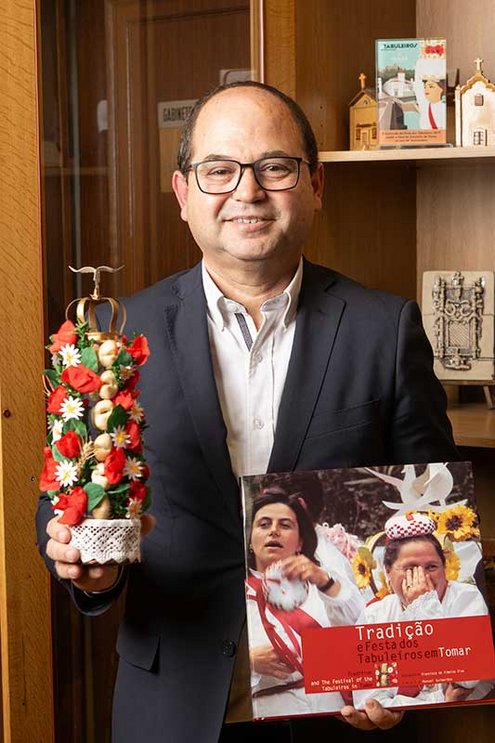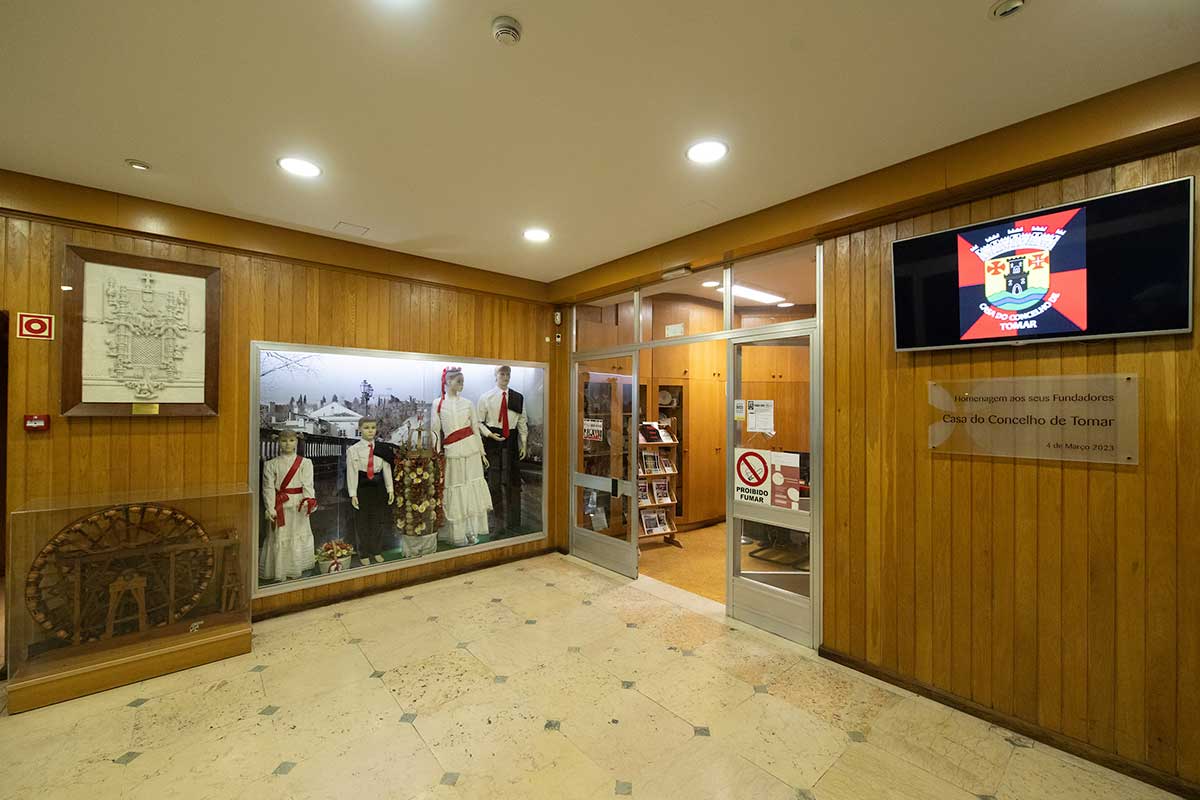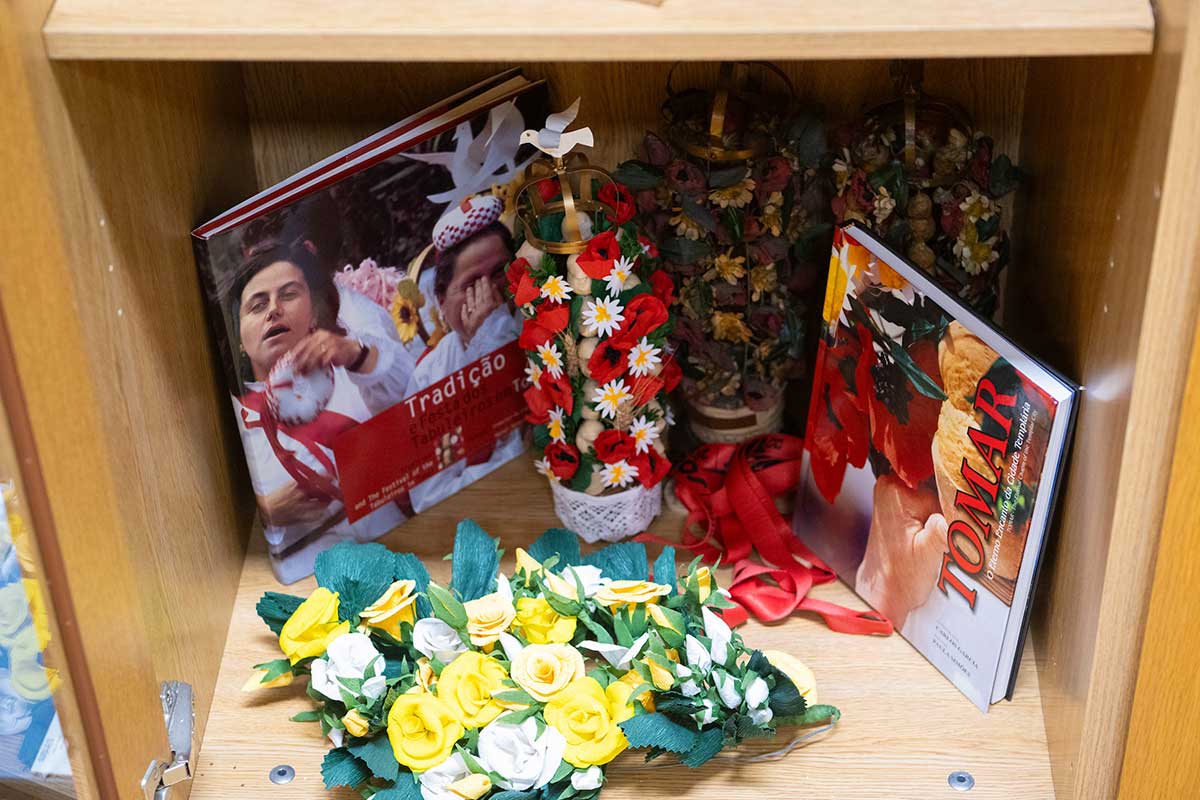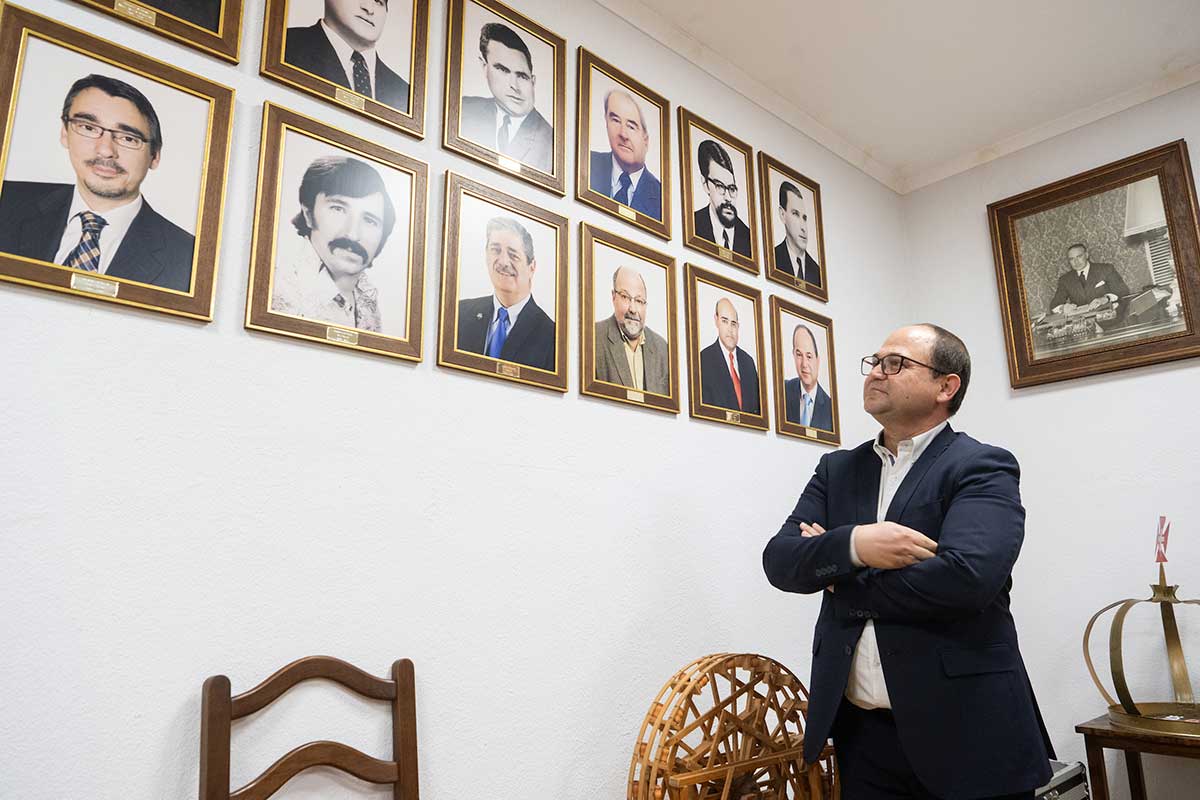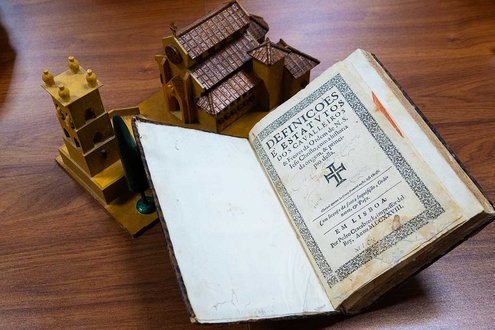Regional Houses
Tomar Council House
The children came from Tomar and paraded the Festa dos Tabuleiros on Avenida da Igreja in Alvalade. And that was the greatest source of pride for everyone from Nabantino and Tomar.
Founded in March 1943, the Tomar Council House is today an important meeting point for the people of Tomar in Lisbon.
Over the years, recalls Carlos Galinha, 58, chairman of the board, the House has faced many challenges in finding its own space. But since 1968, to everyone's delight, it has been housed in a building on Rua Flores do Lima, which was built in stages. "An association is something that brings a lot of personal and professional sacrifice, a lot of abdication, and having this building is a great help. If we didn't have this building, we'd probably be like other houses or other associations that ended up disappearing, because the sacrifices and burdens are so great," he confesses.
The space belonged to a member of the Council House, José dos Santos, "who gave the land to the Tomar Council House Association for the same price he bought it, so that it would be possible to start building the headquarters of the Tomar Council House". The first stone was laid in 1968 and all the members were involved in its construction. it is this building that is currently "the cornerstone for this association to be alive. We enjoy coming here, we enjoy working here at our embassy and promoting Tomar in Lisbon. And we also love inviting other associations from Tomar to collaborate with us."
In 1988, the House finally obtained Public Utility Status, allowing it to continue its march "towards the defense and values of the Municipality of Tomar".
Since its creation, the House has promoted the culture and traditions of Tomar, bringing together countrymen and supporters of the Land of the Templars in the same space:
"At the time, not everyone could afford to travel to Tomar. We mustn't forget that people went to Tomar every six months, from year to year, and people came here a lot through other people who worked here, particularly in the construction industry."
The region's popular culture is disseminated through the organization of various events, whether cultural or gastronomic: "We hold dinners with a connection to our land. Themed dinners where we invite producers from Tomar to come and exhibit," says Carlos Galinha, recalling, as an example, the invitation made to the Tomar de Asseiceira Parish Council, which came to Lisbon to promote the parish's cultural traditions. "They brought folkloric groups, pottery and various artisans who literally got people hands-on making pots. They brought in cooks who made the most characteristic food of the parish and it was a night of promotion," he recalls.
The Council House also stands out for its recognition initiatives, such as the merit awards, created to honor members who distinguish themselves in promoting the Casa and Tomar. It also organizes cultural activities, such as book launches by local authors, and maintains a strong link with the Alvalade community, offering social support and promoting exchanges with other associations in Tomar.
It is located at Rua Flores do Lima, 8, Alvalade.
Tomar, the land of the Templars
The city of Tomar has a unique and inseparable link with the Order of the Knights Templar, one of the most powerful military orders of the Middle Ages. Founded in the 12th century, the Order arose during the Crusades with the mission of protecting Christian pilgrims traveling to Jerusalem. Over time, however, the Order expanded its power, wealth and influence throughout Europe, establishing itself in Portugal in 1160 at the request of King Afonso Henriques. Tomar was the city chosen by Gualdim Pais, one of the most famous Templar masters, as the Order's headquarters in Portugal.
Gualdim Pais was granted land in the region and founded the castle of Tomar, which became the center of Templar activity in the country. The city and its surroundings were administered by the Templars, who began building a fortified complex, where the imposing Convent of Christ, a UNESCO World Heritage Site, later emerged.
Although the Order of the Templars is now extinct, the legacy of that era lives on in Tomar and in the people of Tomar, where its memory and legends are still celebrated today.

